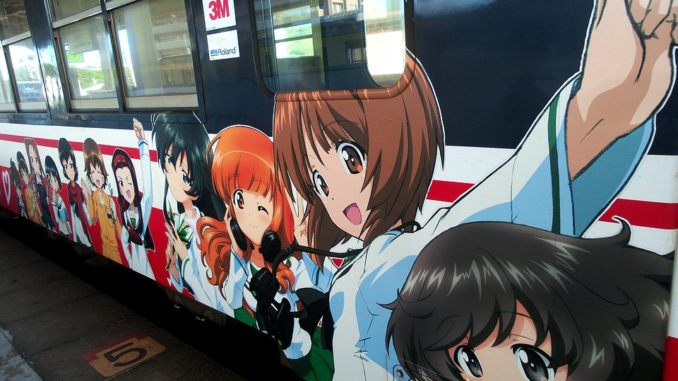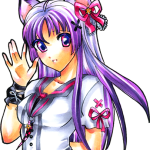
Anime is the word used to describe the Japanese form of animation, and manga is the name given to Japanese graphic novels, similar to the comic books found in the United States. During the 1970s, anime became extremely popular in Japan and led to the creation of anime conventions, which later led to the birth of mammoth events such as Comic Con in the United States.
Anime Influences EverythingOver the years, anime has become increasingly popular in Japan and has influenced Japanese culture in many ways. When Japan sent water tanks to Iraq in 2003, it was not the Japanese flag that was printed on the tanks, but images of Captain Tsubasa, a popular Japanese manga character recognized all around the world, were used.
In 1985, the Japanese Police Department created a mascot called Peopo, an amalgamation of ‘police’ and ‘people’ and the mascot resembled an adorable character from a children’s cartoon. This was a step in the right direction for the police, who were aiming to create a more approachable persona for the community at large.
These are just a few examples of how anime and manga have made their way through the Japanese society over the years. At anime conventions, known as Comiket in Japanese, die-hard fans dress up as their favorite anime character, thereby creating the term ‘cosplay,’ which is made of the words ‘costume’ and ‘play.’
Japan hosted the world’s first Comiket which was held in December 1975. It saw a few hundred people in attendance. Today, however, this figure has grown to over half a million. As far as Japanese culture is concerned, anime is here to stay.
Beginnings
Osamu Tezuka is widely acknowledged as the creator of anime and manga. His manga, Tetsuwan Atom was Japan’s first anime export to the U.S, and came to be known there as Astro Boy. A crime-fighting robot-boy, the comic remains a cult classic even today. Manga comic books tend to cover a range of topics and are aimed at both genders. Due to their popularity, manga books can be seen taking up plenty of space in almost every book store in Japan.
Anime and the ‘Cute’ Factor
Manga comic books and even anime characters often feature characters with almost child-like features such as oversized eyes, a trait that falls under Kawaii, which translates to ‘cute.’ The popularity of manga has led to people trying to emulate the adorable characters.
One of the latest fads to hit the virtual world is a smartphone app called Meitu, which lets you transform your selfie into an anime character lookalike. Using face-recognition, along with filters, inspired by anime characters, the app lets you make your face look as anime-like as possible. As of January 2017, the app had gained over 430 million downloads outside China, with the sudden spike in downloads seen immediately after the app introduced the option to give any image an anime makeover.
The popularity of anime and manga over the years has continued to show itself on social media as well. Beauty gurus often transform themselves to resemble anime characters, complete with doll-like features.
Hug-Pillows
Anime has also led to the rise in use of bedroom accessories such as the dakimakura. This is a human-sized ‘hug pillow’ which fans of the anime genre often sleep with in their beds. In the 1990s, these pillows were created with plain pillow covers but in the later years, and with the rise in popularity of anime, the pillow covers began featuring various anime characters on the front and back.The NSFW pillows such as granblue fantasy Dakimakura are popular in Japan.
Although gathering collectibles is a natural part of being a fan, some people in Japan have been known to take this a little too far. The term Otaku in Japan refers to someone who is obsessed with comic books and computers, someone who prefers to stay indoors than venture out into the real world.
However, this word took on a sinister meaning in 1989, when a deranged killer took the lives of several young girls. When the killer, Tsutomu Miyazaki’s room was raided by police, it was found to be home to several thousand anime and horror films. This led him to be named ‘The Otaku Murderer’ and gave anime a negative reputation, for a while at least.
However, the term Otaku no longer holds an extremely negative connotation, but it isn’t all positive either. Some people take their love for the anime genre to another level. One fan even went as far as marrying his pillow! He believed the pillow, which for him represented the anime character Fate Testarossa, was his lawfully wedded partner for life, also known as a waifu. Within Otaku culture, some fans become so attached to fictional anime characters that they refer to them as waifu (or wife). The opposite of waifu is husbando.
Increasingly Reclusive Youth
Japan has also seen a disturbing condition appearing among its youth in recent years. Due to the immense pressure that society places on them, some people refuse to leave their homes and choose to shut themselves in their room. This behavior is most common among those aged between 15 and 39.
According to the Japanese Health, Labor and Welfare Ministry, the people who lead such reclusive lives are known as hikikomori; and according to government data released in 2016, there are over 541,000 Japanese youth who refuse to leave their homes and interact with others since the last six months at least.
The condition is thought to be triggered by depression and anxiety, and is more prevalent among males than females, most likely because they face higher expectations in Japanese society. Most hikikomori prefer to watch anime, read manga and watch other types of television to pass their days, instead of interacting with real humans.
Conclusion
Both, anime and manga continue to be immensely popular genres all over Japan. They have influenced different parts of Japanese society and will not be going extinct any time soon. With the continued popularity off the genres, it is not surprising that the community of fans extends to the rest of the world as well.
Guest Written By: Rose Martin
Sources:
Image via: https://pixabay.com/en/japan-tokyo-train-manga-anime-1558640/
Anime News Network
Japanese Health, Labor and Welfare Ministry
Wikipedia


Leave a Reply